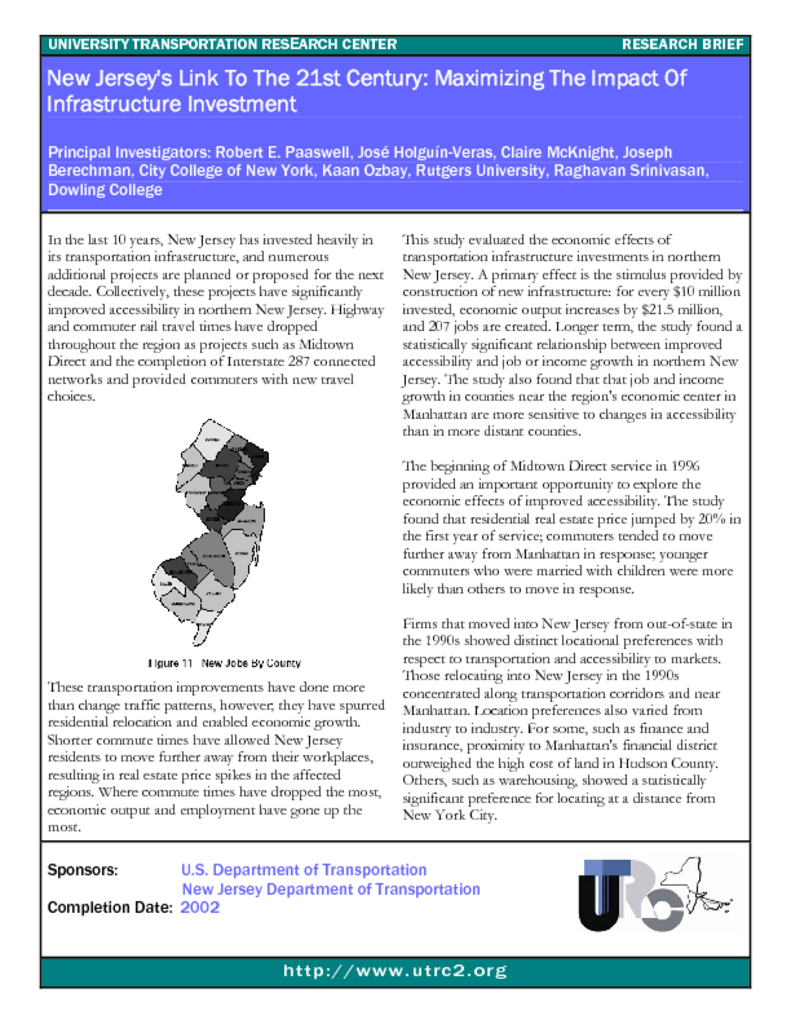In the last 10 years, New Jersey has invested heavily in its transportation infrastructure, and numerous additional projects are planned or proposed for the next decade. Collectively, these projects have significantly improved accessibility in northern New Jersey. Highway and commuter rail travel times have dropped throughout the region as projects such as Midtown Direct and the completion of Interstate 287 connected networks and provided commuters with new travel choices. These transportation improvements have done more than change traffic patterns, however; they have spurred residential relocation and enabled economic growth. Shorter commute times have allowed New Jersey residents to move further away from their workplaces, resulting in real estate price spikes in the affected regions. Where commute times have dropped the most, economic output and employment have gone up the most. This study evaluated the economic effects of transportation infrastructure investments in northern New Jersey. A primary effect is the stimulus provided by construction of new infrastructure: for every $10 million invested, economic output increases by $21.5 million, and 207 jobs are created. Longer term, the study found a statistically significant relationship between improved accessibility and job or income growth in northern New Jersey. The study also found that that job and income growth in counties near the region's economic center in Manhattan are more sensitive to changes in accessibility than in more distant counties. The beginning of Midtown Direct service in 1996 provided an important opportunity to explore the economic effects of improved accessibility. The study found that residential real estate price jumped by 20% in the first year of service; commuters tended to move further away from Manhattan in response; younger commuters who were married with children were more likely than others to move in response. Firms that moved into New Jersey from out-of-state in the 1990s showed distinct locational preferences with respect to transportation and accessibility to markets. Those relocating into New Jersey in the 1990s concentrated along transportation corridors and near Manhattan. Location preferences also varied from industry to industry. For some, such as finance and insurance, proximity to Manhattan's financial district outweighed the high cost of land in Hudson County. Others, such as warehousing, showed a statistically significant preference for locating at a distance from New York City.




